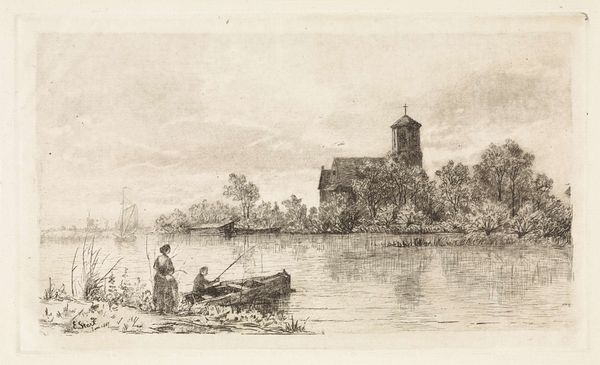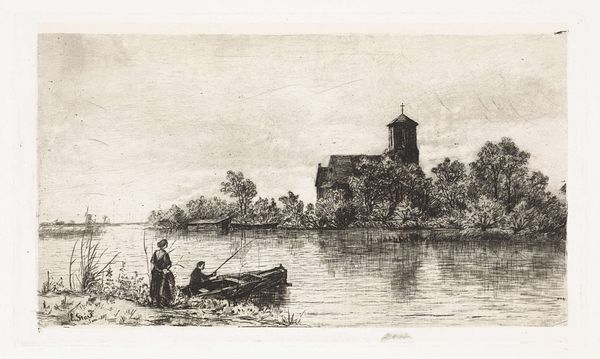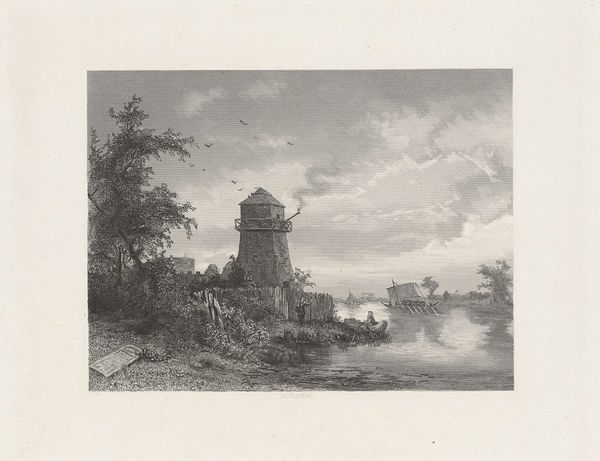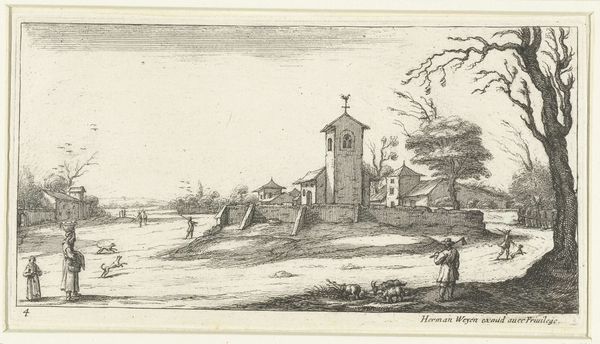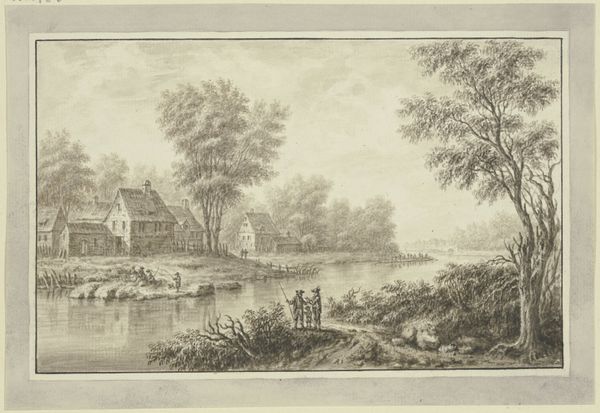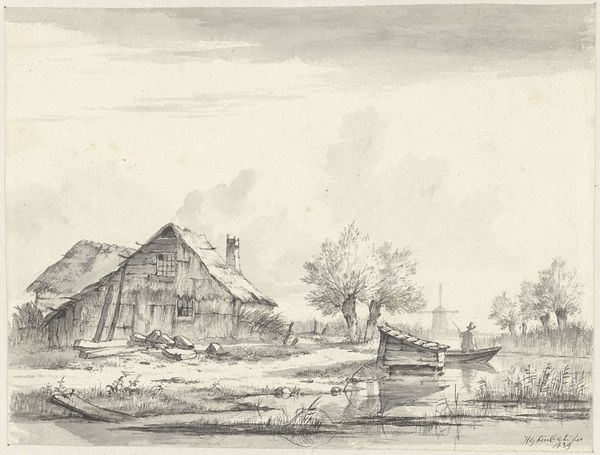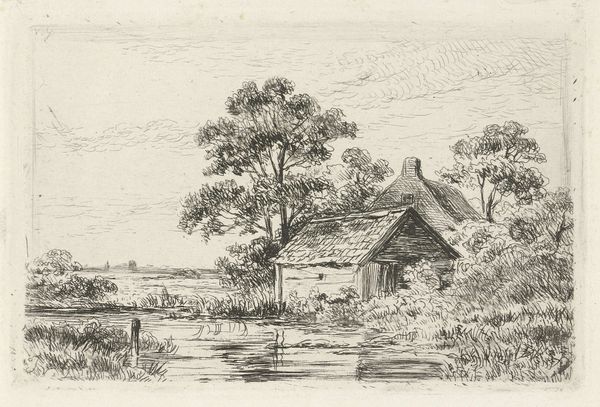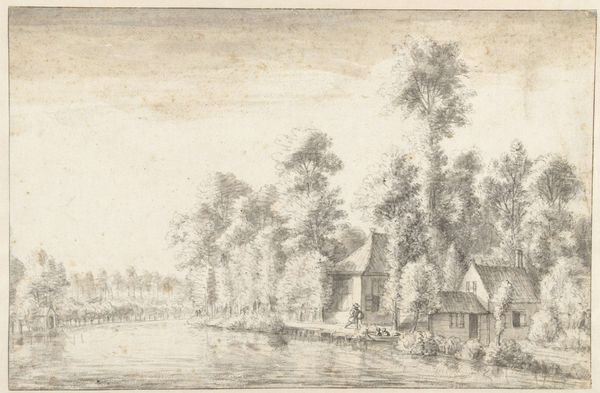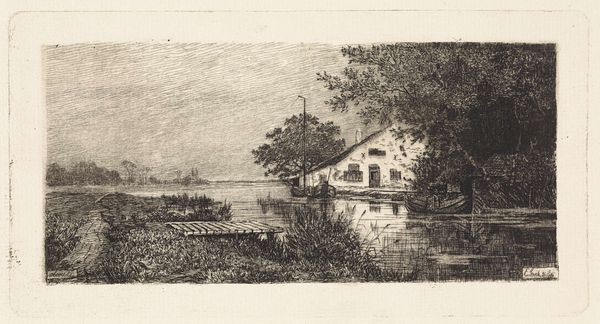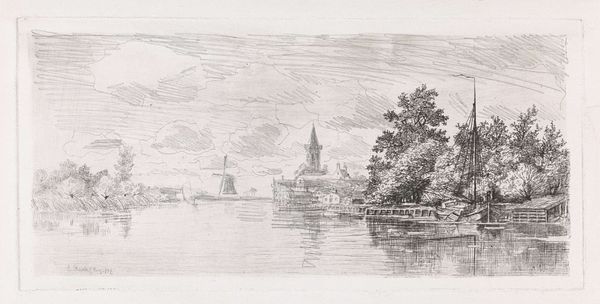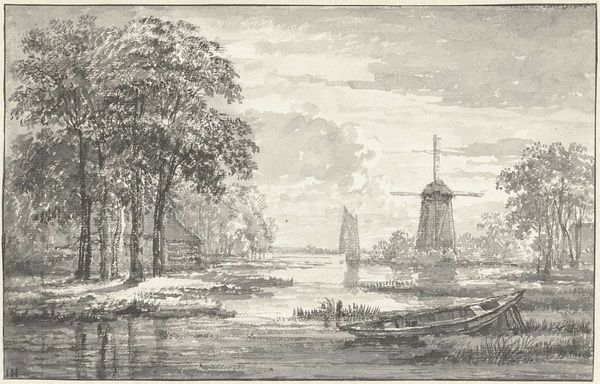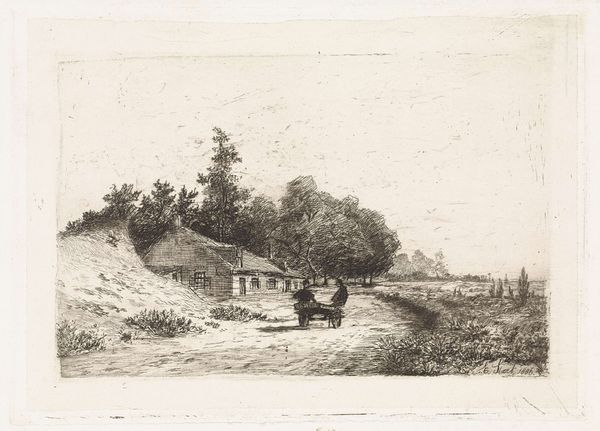
print, etching
# print
#
impressionism
#
etching
#
landscape
#
realism
Dimensions: height 144 mm, width 245 mm
Copyright: Rijks Museum: Open Domain
Curator: Before us we have Elias Stark's "Gezicht op de Sint Urbanuskerk te Bovenkerk", or "View of the Saint Urbanus Church in Bovenkerk", an etching from 1887. Editor: It's a peaceful scene. The subdued tones create a serene atmosphere, despite the detailed rendering of the architecture. The church looming amongst all the greenery, reflects powerfully in the calm water. Curator: Stark, a lesser-known figure of Dutch Impressionism and Realism, often depicted unassuming, rural landscapes like this. This work is a tangible record of the cultural landscape of the Netherlands at the time. Note how printmaking allowed for wider dissemination of these views, reinforcing a shared sense of national identity. Editor: I find the almost ethereal quality of the etching intriguing. The reflection of the church becomes almost as significant as the building itself. Churches, of course, are powerful symbols of stability and continuity, often viewed as anchors within their communities. I’m wondering, does the mirrored image enhance that sense of permanence, or does it suggest something more ephemeral about faith and belonging? Curator: I believe Stark aimed to capture a realistic depiction of place, embedding a church into an everyday scenery to demonstrate how essential that social service was for the citizens of Bovenkerk. While it stands powerfully in the image, the surrounding imagery shows the importance of harmony with nature, and integrating important religious imagery in the social sphere. Editor: True, and the inclusion of the small boats might signal a life of transit, but still relying on the steady influence of religious faith, in the guise of the steady architecture. And the overcast skies add to the reverent, introspective mood. It all pulls you into quiet contemplation. Curator: Studying Stark's printmaking provides a small lens through which to view Dutch society and culture during the late 19th century. Appreciating artists like Stark helps broaden our historical perspective on art history. Editor: I agree completely. This detailed landscape speaks softly but carries a certain melancholic beauty about tradition and everyday life, all anchored around faith.
Comments
No comments
Be the first to comment and join the conversation on the ultimate creative platform.
